
A tender, tasty steak transforms a simple meal into a feast. The most tender cuts of beef come from the loin, but not all loin steaks are the same. Filet, or tenderloin, strip, or top loin, and sirloin steak all come from this portion of the cow, but each has distinctive qualities that suit it to a particular kind of meal.
Location, Location, Location
The tenderness of a piece of meat is directly related to the kind of work done by its muscle components. The tenderest beef steaks come from the loin muscles: the Longissimus dorsi, or top loin, and Psoas major, or short loin. Both are located on the back of the animal between the major ribs and the rump and comprise a muscle area much more lightly used than the legs or neck areas. While steaks in the adjacent rib area gain some of their tenderness from abundant fat-marbling in the meat, loin cuts generally gain their tenderness more from their location than their marbling.
Filet Steak
Known by a wealth of names, tenderloin steak comes from the short loin and is probably the most tender of all beef steaks. Choose filet, tender steak or filet mignon to enjoy this nearly fork-tender meat. Filet flavor is less assertive than that of strip or sirloin steak. To maximize flavor, filet should not be marinated, heavily seasoned or cooked beyond medium, an internal temperature of 145 degrees Fahrenheit, the safe-temperature standard established by the United States Department of Agriculture.
Strip Steak
Asking for a New York-cut steak in New York or a Kansas City-cut in Kansas City may yield only a puzzled look, but both names for strip steak are used outside those regions of the country. Depending on the region, strip steak may also be listed on a menu or in a meat case as hotel steak, ambassador cut, club steak, contrefilet or top loin. Steaks, including both top loin, tenderloin and the bone that lies between them, are porterhouse and T-bone cuts. A strip steak is basically a porterhouse or T-bone with no tenderloin portion. Flavor is full and hearty and needs only simple seasonings.
Sirloin Cuts
Sirloin steak nomenclature can be confusing. Boneless top sirloin steak actually comes from the top loin. Flavor is robust, but tenderness is unpredictable. Steaks cut from the sirloin itself are ordinarily bone-in and are described by the kind of bone they contain: pin-bone, flat-bone, round-bone and wedge-bone. Pin-bone, closest to the porterhouse and ribs, is the most tender. Wedge-bone, closest to the rump, is the least tender. Overcooking can diminish flavor. For a full-flavored sirloin, plan to broil or grill to medium, an internal temperature of 145 F.
Related Articles

Does a Rib Eye Have a Filet in It?
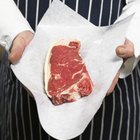
Tenderloin Filet Vs. Top Sirloin
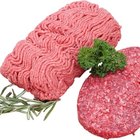
What Cuts of Meat Are Used for Ground ...

Choice Vs. Prime Beef Grades

Different Cuts of Steak
Difference Between Ribeye Steak & ...

Do Filet Mignon Steaks Come From Female ...

How to Cook Kobe Steaks
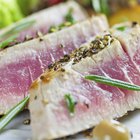
Tuna Steaks Nutrition

Is the Rib Eye or Sirloin a Better Cut?

Types of Steak: Rare and Medium Rare

The Best Way to Cook Sirloin Steak ...

What Is a Rib-Eye Steak?

Meat Parts of a Lamb

What Is the Difference in Top Sirloin & ...
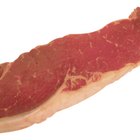
The Difference Between a Sirloin Roast ...
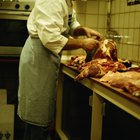
Cuts of Meat From a Front Quarter of ...

The Different Cuts of Beef: Sirloin, ...

Which Cuts of Meat Come From the Front ...
How to Cook Buffalo Fillet
References
Writer Bio
Janet Beal has written for various websites, covering a variety of topics, including gardening, home, child development and cultural issues. Her work has appeared on early childhood education and consumer education websites. She has a Bachelor of Arts in English from Harvard University and a Master of Science in early childhood education from the College of New Rochelle.
Photo Credits
Eising/Photodisc/Getty Images